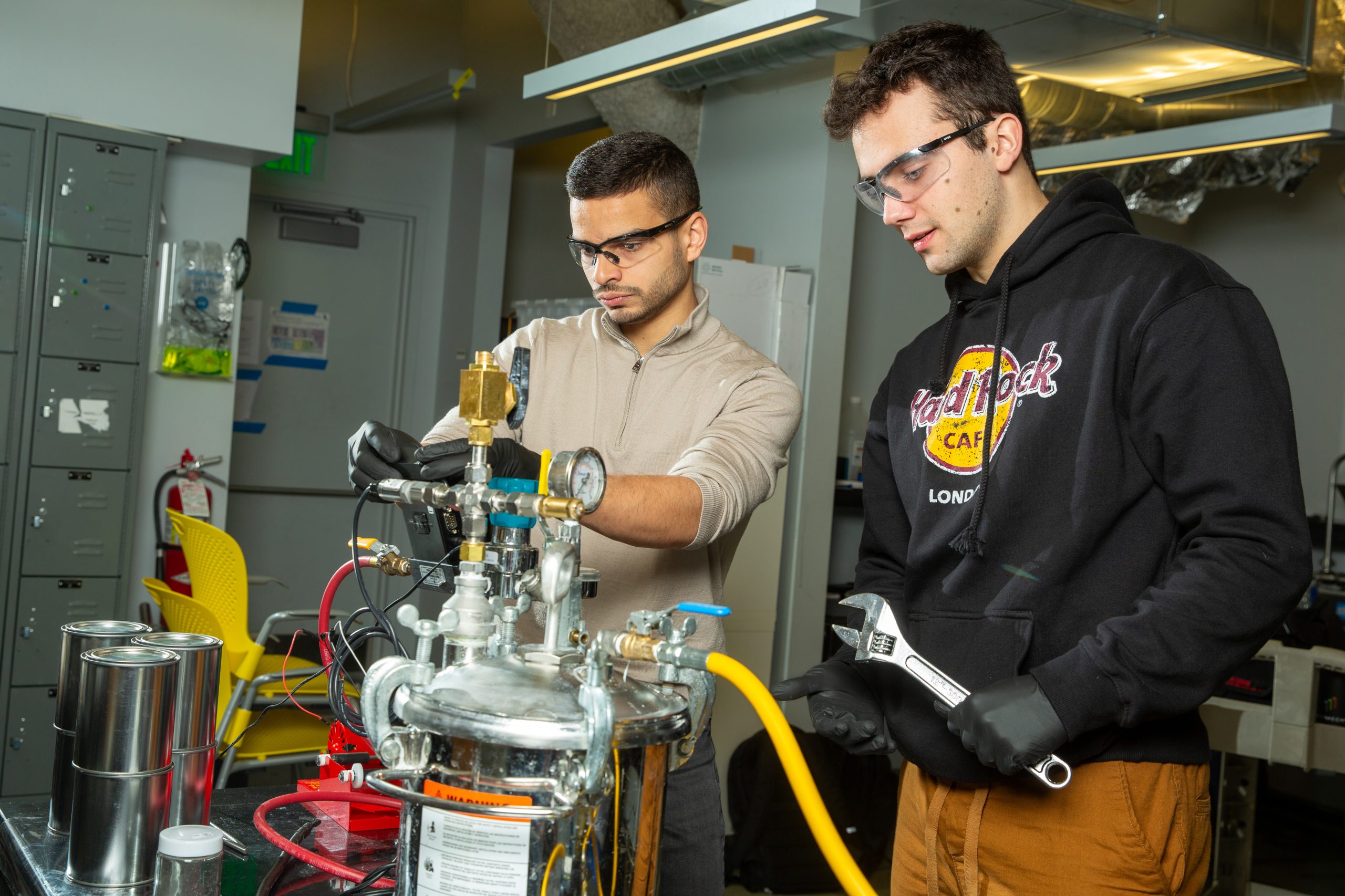An Indian economics professor seeks innovations where few expect to find them: among small farmers in remote regions of India.
Tanadi squats in the shade_of the large tamarind tree. With lowered eyes, he looks at the dusty surface of the village square. Tanadi, a farmer, had not wanted to sit on the plastic stool–on a level with Professor Anil Gupta. And so the professor from the big city had promptly pushed the plastic chairs aside and seated himself next to the farmer on the gnarled roots of the tree. Now he points to a dry branch in a plastic bag. “What do you use this plant for?” Anil Gupta eyes the farmer curiously through his glasses. “For nothing special; there’s not much you can use it for,” Tanadi shrugs.
“Really?” the professor insists.
Tanadi scratches his gray, stubbly beard. “Well, we stick the branches in the field to keep the rice weevils away,” he says. “The water in the paddy field washes the medicine out and spreads it over the plants.” Anil Gupta slaps his thigh. “That’s nothing special? But that’s fantastic!”
Anil Gupta teaches and researches at the Indian Institute of Management in Ahmadabad, in the state of Gujarat. He is tall, with a carefully trimmed beard. Farmer Tanadi is short and stocky. His leathery skin bears witness to hard physical work under the scorching sun of eastern India. Tanadi has never been outside his village, Sargipal. The economics professor lectures in Berkeley, Cambridge and Boston. But while his colleagues sit in their comfortable offices, he visits villages that seem light years away from the modern India of the big cities. There he seeks out inventions, tricks and ideas from people who have to get by on the strict minimum. “Necessity makes them very inventive,” he says. “People in the villages often don’t realize what they’re capable of.”
The professor’s enthusiasm is infectious. Tanadi straightens up. Recipes for vegetal fertilizers and weed killers emanate through his red teeth, stained from chewing betel nuts. He knows herbs from the woods that help toothache, broken bones, malaria and stiff knees. This is just why the professor has undertaken the long journey here. He pulls a crumpled piece of paper out of his shirt pocket and makes some notes. Gupta and a band of about 30 activists have already been to the Indian states Assam, Gujarat, Kashmir, Orissa, Rajasthan and West Bengal. Every six months, the group—made up of students, postgraduates, retired botanists, farmers and managers—goes on one of these Shodh Yatras, as the tours of exploration are called. They have already visited well over 1,000 villages in remote areas of India.
This time, they have traveled to Chhattisgarh, India’s newest state, formed in 2000 from the eastern districts of the adjacent state of Madhya Pradesh. Chhattisgarh has 20.8 million inhabitants, one-third of whom are aboriginal Indians. Although Chhattisgarh is rich in mineral resources; more than 80 percent of the population works on the land. In these villages live many aboriginal people whose status in Indian society is below even that of the lower castes. In the straggling villages of Chhattisgarh, there is just a single water pump for 60 or 70 households. The women have to balance water on their heads for the long walk home.
Sargipal consists of a handful of clay huts. Bamboo fences keep the emaciated cows out of the small rice fields and vegetable gardens. As well as rice, Tanadi grows peppers, potatoes, okra and tomatoes. Most of it is consumed by the family. The farmer sells the rest at the market.
Tanadi has seven children and four grandchildren. If the harvest is bad, he has to offer himself as a day laborer for the equivalent of $1.25. Like the other farmers in his village, he breeds his seeds himself and always uses traditional growing methods. There are also a lot of things that they simply try out. The knowledge they acquire rarely spreads beyond the village, though. The expertise of these people, who are almost without exception illiterate, has not been recorded anywhere.
“We are living in the Information Age, yet their valuable knowledge is in danger of being lost,” says Gupta. “More and more farmers, for example, rely on purchased rice seed instead of working on the further development of their own varieties, which are also much better adapted to the local soils and microclimate.” This is why Gupta created the Honeybee Network. The “network of oddballs”, as Gupta calls it, has been in existence for more than 20 years. The oddballs include scientists, inventors, farmers and NGO activists. The central component is a freely accessible database with 100,000 records so far, all acquired on pollination visits like the one to Sargipal. In addition to the database, a regular newsletter is the most important means of disseminating local knowledge. It appears not only in English but also in numerous local Indian languages. “Like a honeybee, we want to harvest local knowledge and spread it.”
The breadth of these local people’s inventiveness is stunning. Out of a mobile phone, they cobble a remote control for their water pump; from an old bicycle, a manure spreader. They protect mango trees against termite attack with a mixture of dung and red clay. With an ointment made from urine and local herbs, they heal mastitis in cows.
But how do you come upon the ideas, tricks, customs and inventions of small farmers who live far from paved roads in villages without electricity or mobile phone reception? You walk.
Gupta has already covered about 3,725 miles. With long steps, the 57-year-old scientist strides over the cracked earth to the next village. The path leads along dusty riverbeds, past fields where piles of collected ebony leaves lie drying. The farmers sell them to beedi makers, who roll tobacco into the leaves and tie them with a length of thread. The smoke from these poor man’s cigarettes smells like a brush fire.
The sun is already well above the rounded tops of the wooded hills. Very soon the thermometer will climb to over 133 degrees Fahrenheit in the shade. The Shodh Yatras are purposely scheduled when it is particularly hot and dry or bitterly cold. “In this way, we show the inhabitants of the region our solidarity,” Gupta explains. While the others in the group rush to the water pump during a short rest, he walks a little farther and strikes up a conversation with a herdsman.
In the next village, the pilgrim band is welcomed by women in colorful saris with tattooed arms. They serve a milky refreshing drink made from the fruits of the tamarind tree, then samples of local food: varieties of millet, fermented bamboo shoots, boiled jackfruit kernels and chutney made from red ants. The chutney is an anti-inflammatory. Gupta tastes, praises and jokes. He quickly wins their hearts.
From the discoveries on the Shodh Yatras and subsequent contacts in the region, Gupta has developed a number of products and had them manufactured. They are sold in village shops or by Honeybee Network reps. The packaging of the herbicides, vegetal fertilizers and veterinary remedies bears the name of the creator, a single person or a whole village. Network scientists research this on the spot and in the database before they test the product in the lab.
The Network receives 15 percent of the proceeds from the sales; the rest goes to the creator and charitable trusts. Some creators, however, will have nothing to do with patents and royalties. Gupta tells of a farmer in West Bengal who does not want to have his pedal-powered rice thresher kit protected by a patent. “He considers the invention an inspiration from God for the benefit of all people,” Gupta says.
In the evening, everyone drops, exhausted, outside a village school, an almost windowless concrete shoebox. A plastic sheet spread on the ground serves as both assembly point and sleeping place. The group walks about 20 miles each day. Gupta does a few yoga exercises and closes his eyes briefly.
Not far away sits Amrut Bhai Agrawat. The 63-year-old man helped launch the Shodh Yatras and has taken part in all of them. He speaks neither Hindi nor English and had only four years of schooling. As a child, he worked long days as a day laborer on the land. “The work was hard, and I was constantly thinking about ways to make it easier,” he says. As a young man, he began to tinker. With tubes and a wooden box, he altered a sowing device so the wind blew away less seed. Another invention helped loosen the soil for the groundnut harvest so fewer nuts remained stuck in the ground. Soon Agrawat opened a workshop; today, his son runs it. Although he is now retired, the old man’s mind has not stopped working. His latest idea: a blocker for a hand-drawn well that costs only a few rupees. With a small metal plate in the right place, the women can stop and rest while the pail of water is retrieved. “Engineers and industrial designers pay no attention to something like that,” says Agrawat, “and yet these little things have such a big impact.”
Gupta tells the villagers about his network and shows a few examples of peasant resourcefulness from other regions. A stuttering diesel engine supplies electricity to the laptop and projector. The farmers gape. It is not so much the other farmers’ inventions that seem to amaze them but rather the respect and interest these earn. This will motivate them to believe in their own knowledge. And that is perhaps the main point of Gupta’s tours of exploration.











